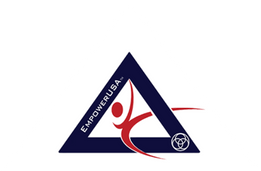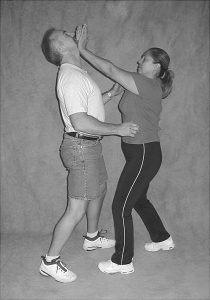INTRODUCTION
“It will never happen to me,” and “It can’t happen here” – these are common, but naive beliefs typically held by the public, especially by those who live in “safe” neighborhoods. The days when personal safety was not a high priority are long gone, no matter where you may live. Today’s society is very different which means that our behavior and thought patterns need to adjust. Each individual needs to take responsibility for maintaining his or her own personal safety.
Before diving into the details of “Why,” I want to define both “personal safety” training and “self-defense” training. Understanding the differences between these two terms will help you to accurately interpret and understand the information provided in this article.
DEFINITIONS
Personal Safety training focuses on educating the mind – providing information that should help you make better decisions regarding potential or real conflict or violent situations. Subject areas that should be part of personal safety training are described in the next section of this article.
Self-Defense Physical Skills Training provides the opportunity to learn, practice, and improve the physical skills necessary for a combative situation. Physical self-defense training does not make a person invincible – it is more of a “discovery” experience. An individual, through the training progressions, discovers what he or she is capable of, if confronted with potential violence. This newly discovered knowledge and awareness of physical skill abilities and capabilities can improve the decision-making process during a confrontation. Specific physical skills training program components are described in the next section of this article.
PERSONAL SAFETY TRAINING
Why Invest Your Time in Personal Safety Training?
Personal safety training should provide in-depth information that enhances an individual’s knowledge, skills, and abilities to recognize & avoid, de-escalate, and/or exit from potentially violent situations.
Personal safety training can be delivered as a live event (in-person seminar or virtual webinar) or it can be provided in an online format. Because this is not physical skills-based training, the online format is as effective, if not more effective than live training! An online course provides many benefits over live training, including:
- Complete the training when it is convenient for you
- Complete the training in the comfort of your own home or in a location of your choosing
- Easily review course content, when you want/need to
- Share the training with friends or family with NO additional cost
- No travel expenses (transportation, food/refreshments, etc.)
Online training should include the following:
- A method for you to ask questions and get relatively quick feedback
- The content is available 24/7
- An option for on-going and unlimited course content access after the course is completed
What Should Be Included in Personal Safety Training?
A comprehensive personal safety training should address most or all the following subject areas:
- Why Learn Personal Safety/Self Defense
- Legal Liability of Self-Defense
- Confidence & Fear
- Assailants – Who Are They?
- Preparation For and Understanding the Consequences of Conflict
- Principles of Personal Safety
- Pre-emptive Self Defense – When, Why, and How?
- Martial Arts Training versus Self Defense Training
- Fitness Training versus Self Defense Training
- Awareness Training (see details below)
- Interpreting Body Language
- Personal Safety Tips – In Public, At Home, In a Car & Traveling
- Personal Safety Tips – Facing a Weapon
- Predator Lures
- Personal Safety ‘Weapons’ – What You Can Use & How to Use Them
- Things a Burglar Won’t Tell You
The words ‘self-defense’ appears frequently in the preceding list of potential personal safety subjects. The purpose for that is to relate the information to the potential for physical conflict or violence. But in true personal safety training there is no physical skills training included – only education. Again, the purpose of personal safety training is to enhance your knowledge to a level that would provide you with the capability and ability to recognize & avoid, de-escalate, and/or exit from a potentially violent situation, without the need for physical self-defense.
Awareness Training
A comprehensive personal safety training program should include mental, emotional, environmental, and physical awareness.
- Mental awareness – mental awareness provides the ability to interpret and analyze input from emotional, environmental, and physical awareness. Mental awareness is necessary for quick decision-making.
- Emotional awareness has two parts:
- Awareness of your own emotional state which helps you to control the external symptoms of emotions like fear, nervousness, etc. You are less likely to be a target of violence if you appear confident and in control.
- Awareness of other people’s emotional state. If you learn to recognize the external symptoms of someone’s emotional state, then you can interact with that person in a more positive way. For example, if someone you are interacting with is getting angry, you can try to defuse the anger.
- Environmental awareness – awareness of the physical environment you are functioning in. Are you in a dark alley, a high crime area, amongst a rowdy crowd, in a room with one exit, etc.? Comprehending and evaluating your environmental “situations” could impact any decisions you make and actions you take if a personal safety issue arises.
- Physical awareness also has a two-part situation:
- Awareness of your own physical abilities and capabilities?
- Awareness of the potential physical abilities and capabilities of an aggressor.
Personal Safety Training – Information Resource
A quality training program will also provide the personal safety information to the participants in a documented format. Here is why documented information should be part of the program:
- If this information is only provided through audio/visual communication, the knowledge will only be retained for a short time – it will gradually fade away if it is not stored in long-term memory!
- If the information is provided in documented format, the participant will have the option to review the content whenever necessary or possible. This is much more valuable to the participant!
PHYSICAL SELF-DEFENSE SKILLS TRAINING
Why Invest Your Time in Self-Defense Physical Skills Training?
Hopefully, by completing personal safety training, you will have the knowledge and skills necessary to recognize and avoid, de-escalate, and/or exit from a potentially violent situation, without the need for physical self-defense. But there is no guarantee that you will be successful 100% of the time. Someday, you may need to physically defend yourself, your family or a friend.
Completing a comprehensive, quality physical skills training program will greatly enhance your chances for a successful outcome from a physically violent encounter. Don’t wait for something bad to happen. Proactively prepare for the potential of being involved in a physical conflict or confrontation. Hopefully you will never need to use the training, but at least you will be better prepared if you do need it.
What Should Be Included in Self-Defense Physical Skills Training
A good physical skills program supports the personal safety concepts and teaches realistic, effective, and practical self-defense techniques, which should include:
- Positioning & Distancing – proper stance (non-aggressive, but ready to act) and maintaining distance from an aggressor.
- Evasion movements – how to effectively and efficiently move away from an attacker.
- Re-Direction techniques – how to properly deflect or block an attacker’s grab or strike attempt.
- Striking techniques – how to execute strikes (maximize power, speed, and accuracy), what body parts can be used for striking and identify the most effective target areas for striking.
- Loosening/Escape techniques – how to loosen/release various types of grabs and holds.
- Self-defense against weapons.
- Ground fighting – how to apply physical techniques while on the ground.
- Environmental-specific considerations – in what environment (small room, elevator, airplane cabin, car, etc.) you might need to perform self-defense actions.
- How to exit, safely and effectively, after physical self-defense actions are performed.
- Identify everyday items that could be used as self-defense “weapons” and how to use them.
- Self-Defense Skill Performance Conditioning
A good program progressively teaches easy to learn, simple to master, practical, realistic, and effective physical strategies and techniques – not the TV & movie choreography we so often see.
- The limited time that most people will typically commit to self-defense training makes it necessary to teach skills that are tailored to an individual’s abilities and capabilities.
- It is better to learn, repetitively practice and become proficient at performing a few techniques than it is to learn, but not perfect dozens of different techniques.
- Training is progressive – gradually increasing in complexity (single techniques progressing to combinations of multiple movements and techniques) and intensity (speed of movement, power of movement, resistance to movement, etc.).
- Technique performance is taught in such a way that you achieve your maximum potential for technique performance speed, quickness, power, accuracy, etc.
Physical self-defense should be the last choice for action, but training for it is necessary to gain the greatest possible level of confidence. Physical skills training provides the best chance for a successful outcome if physical self-defense becomes necessary.
SUMMARY
Personal Safety Training can be effectively offered as live training (in-person or virtual) or as an online training course. The flexibility of the online course delivery formats makes personal safety training accessible to anyone at any time! There is absolutely no barrier to providing this training!
Physical skills training should be a live, in-person format. It is critical for a trainer to be able to observe and evaluate a participant’s movements and techniques in 3 dimensions – all movement is 3 dimensional. To help an individual attain his or her maximum physical skills potential, the quality of the movements must be accurately assessed and corrected.
A quality physical skills training program provides participants with learning progressions that eventually lead to practice time against “realistic” attacks performed by the instructor wearing full protection so the trainee can fight back with full power and speed. In this situation, the trainer “attacks” the trainee slowly, with little force at the beginning, but gradually increases the speed and power of the following attacks until the trainee can perform at full speed. Experiencing the “adrenaline rush” in this “safe” environment is crucial!
Here is one final training recommendation – the training program should be enjoyable. Yes, this is a serious subject and should be presented as such. But, if a training activity is enjoyed, the information and skills are retained better! And, if you enjoy this training, you might discover a whole new fitness activity in which to consistently participate! But please understand that fitness-specific training is not self-defense training. However, self-defense training can improve fitness.
CONCLUSION
I hope I have provided you with:
- The motivation to complete a personal safety and physical self-defense skills training program.
- Practical and useful guidelines by which to evaluate and choose a training program that will meet your specific needs and expectations.
Remember, “ONE BODY, ONE LIFE, ONE CHOICE – BE SAFE & STRONG!”




